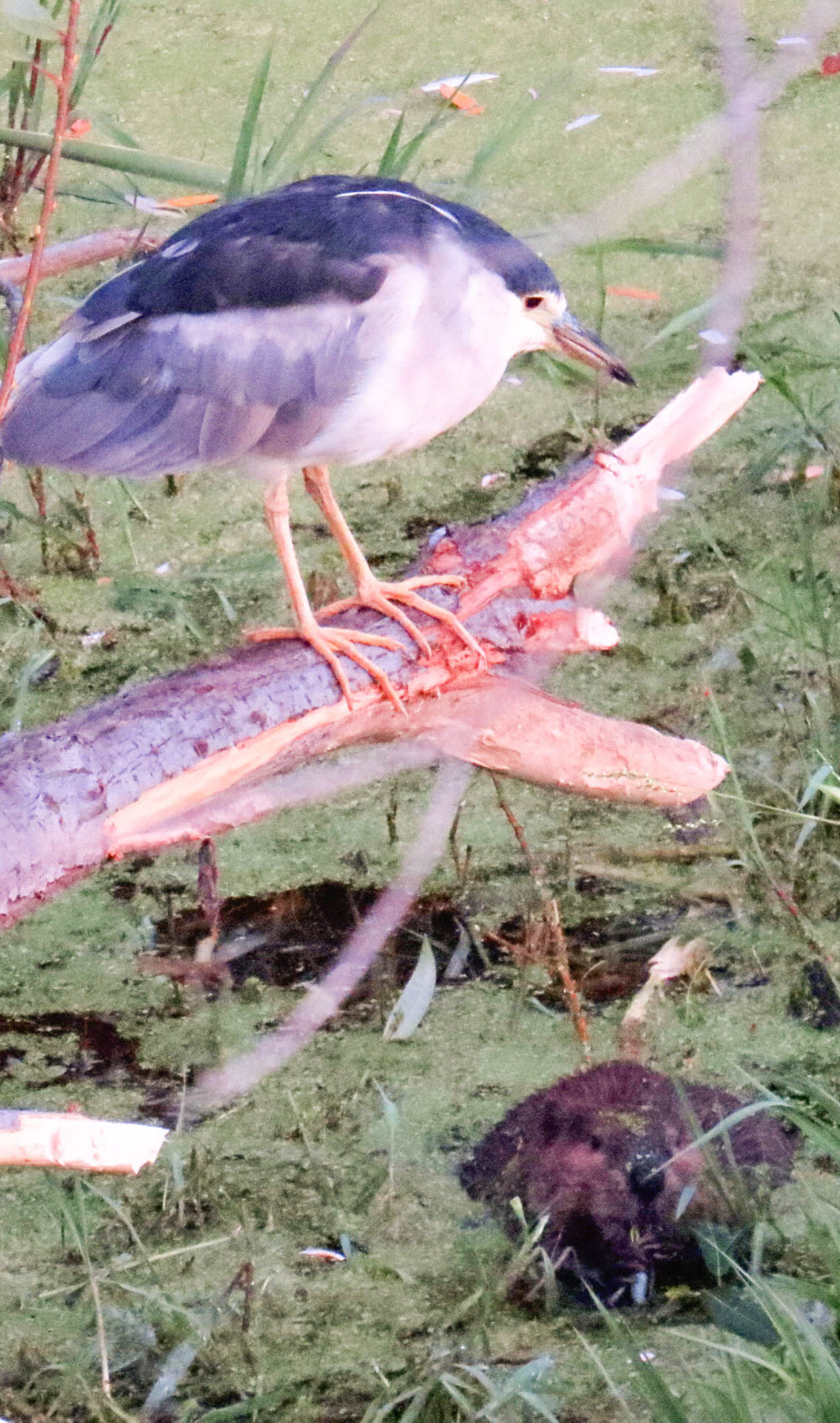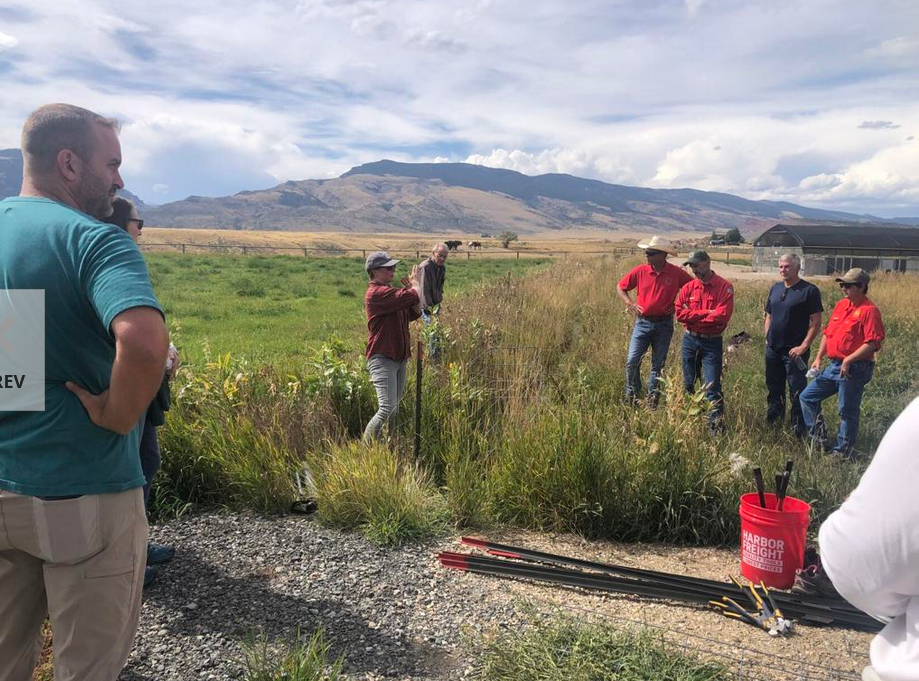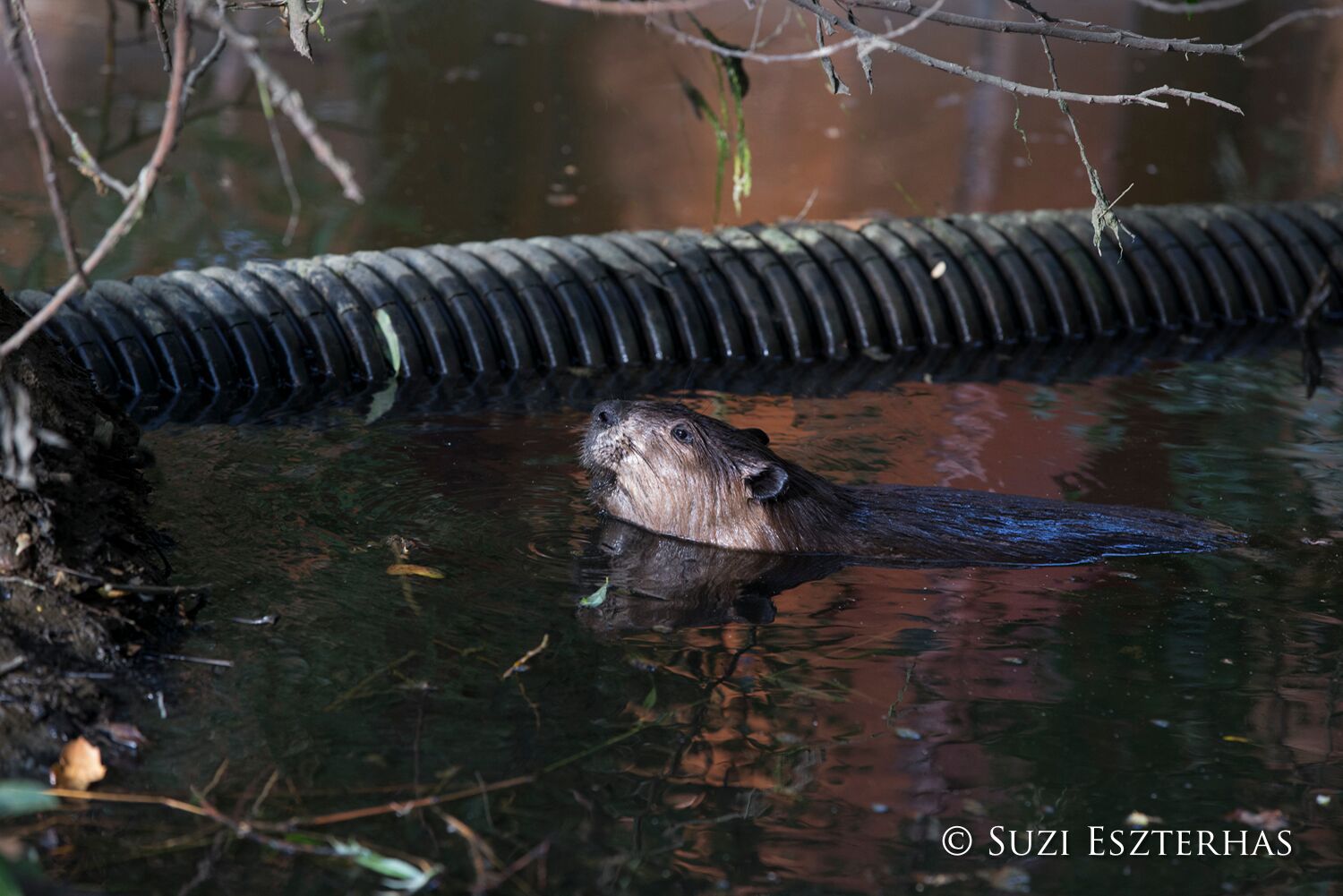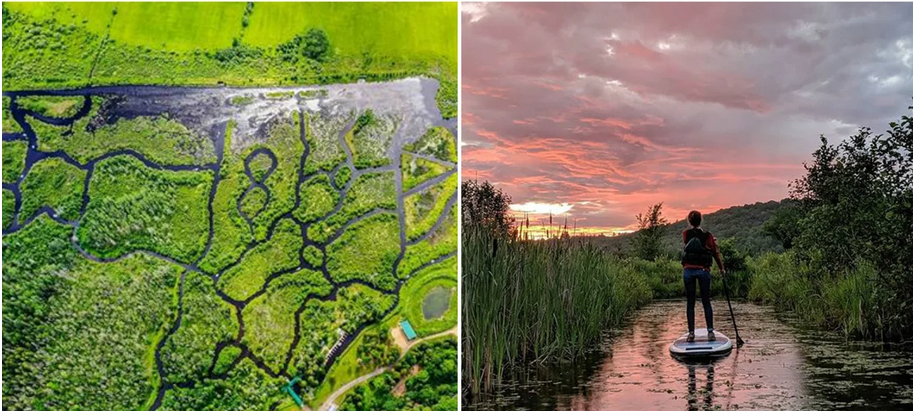 I saw one night heron at our dam once, but I never saw him catch anything. This photo is from Rusty Cohn in Napa. In Martinez they all roost in one tree at the wharf and mostly hunt closer to the Marina. I know they must fish like other herons so the internet helped.
I saw one night heron at our dam once, but I never saw him catch anything. This photo is from Rusty Cohn in Napa. In Martinez they all roost in one tree at the wharf and mostly hunt closer to the Marina. I know they must fish like other herons so the internet helped.
Month: September 2024
I may be sentimental, but it always touches my heart to read about cities protecting wildlife corridors. Especially when the article has photos like this;
City staff recommend denial of Alpenrose land use permit
City of Portland staff recommended denial of the Land Use permit for the proposed 263-unit Raleigh Crest development on the Alpenrose site a week ago Friday, concluding that “all of the relevant standards and approval criteria have not been met.” Although the denial was based on several issues, the most complicated of them seemed to involve a wildlife corridor located on the southernmost edge of the property.
The pinch-point of the corridor is the area just north of the intersection of SW Shattuck Rd and Vermont St. Not only is this location tricky for wildlife, it’s also not a great place to be on a bicycle or walking—but wildlife has federal and state protection.
What’s this? Denying human use because wild critters need it more? Did I just read that aloud? Someone give me a glass of water. I can’t stop whooping.
Here’s an excerpt from the decision that talks about the wildlife issue:
… the site is a critical connection point for the movement of wildlife between the upstream habitat areas along Vermont Creek up to Gabriel Park and the extensive downstream habitat areas starting at Bauman Woods and the confluence with Fanno Creek and beyond into the Fanno Creek habitat corridor.
Thus, wildlife mobility is a key functional value of the site and the ability of wildlife to continue to move through this corridor should be preserved and carefully considered in any redesign of the SW Shattuck crossing. Any increased barriers to movement (e.g., proposed retaining wall, fall protection fencing, increased vehicular traffic, etc.) and reduction of wildlife mobility through this corridor must be mitigated, as they could have adverse long-term impacts on local wildlife species, particularly semi-aquatic mammals such as beaver, river otter, muskrat, and mink as well as the flightless ducklings of locally breeding waterfowl, such as mallard and wood duck.
Beaver are of particular concern because of their status as a keystone species in wetland ecosystems and the important role they play in creating and maintaining the habitat used by a wide variety of other species in this wetland complex.
 BEAVER ARE OF PARTICULAR CONCERN? Am I dreaming? Did I just fall asleep without noticing because I must be dreaming. Either I’m hallucinating or they must hate the applicant a whole hell of a lot.
BEAVER ARE OF PARTICULAR CONCERN? Am I dreaming? Did I just fall asleep without noticing because I must be dreaming. Either I’m hallucinating or they must hate the applicant a whole hell of a lot.
The applicant is Bike Portland which while I can imagine gets on folks nerves from time doesn’t have any dollar signs associated with. I’m sure if the request was to build a starbucks or a condo unit we’d be hearing less about wildlife.
But STILL.
When I finally settled down to read this Cody Wyoming article I was glum at the recommendation for relocation, but after the usual discussion of musical beavers it gets even better:
G&F lectures about beaver management
 Beavers are a unique species of animal known as keystone engineers, meaning they play a significant role in reshaping their environments, which provides benefits for a number of other species as well as themselves. However, beaver population numbers in the Big Horn Basin are at historically low levels.
Beavers are a unique species of animal known as keystone engineers, meaning they play a significant role in reshaping their environments, which provides benefits for a number of other species as well as themselves. However, beaver population numbers in the Big Horn Basin are at historically low levels.
By building dams, beavers increase the area of riparian ecosystems and restore the watershed in their respective regions. Over time, this leads to increased growth of cottonwoods and willows, as well as a rise in the water table and reduction of the impact of future wildfires.
However, property owners in the region experience difficulties when beavers dam irrigation ditches and culverts, which can lead to flooding of roads, driveways and pastures.
To assist landowners and beavers, Altermatt has relocated approximately 100 nuisance beavers. He has played a key role in moving beaver colonies from areas where they are unwanted and causing conflict to areas where they can flourish without causing unwanted changes to private land.
“When you’re able to trap and relocate entire colonies at once, there’s a better chance that the beavers establish themselves in their new location,” he said.
Yeah yeah yeah, we’ll take the beavers away and you can pat yourself on the back for not shooting them and maybe they’ll even live when we put the somewhere else! I mean sure, you’ll get new beavers after the old ones move out but this will fix the problem for now.
I liked this very much better:
 Other nonlethal solutions for beaver management were presented by Elissa Chott, Beaver Conflict Resolution Fellow at the National Wildlife Federation.
Other nonlethal solutions for beaver management were presented by Elissa Chott, Beaver Conflict Resolution Fellow at the National Wildlife Federation.
Since 2019, Chott and her team have led a program in Montana to reduce beaver conflicts by installing tree wrap, pond levelers and exclusion fences on properties where nuisance beavers are present.
Chott was trained by Mike Callahan of the Beaver Institute, who has decades of experience on the East Coast in mitigating beaver conflicts by building these apparatuses.
In addition to installing these projects, Chott’s team assists in acquiring permitting and offsetting costs through a cost-share program. To date, they have completed 74 projects.
“We developed our cost-share program because we did not want financial causes to be the barrier to getting these projects completed,” she said. “We’re talking about hundreds of dollars to install these projects as opposed to thousands of dollars if somebody had to pay for everything themselves.”
The workshop concluded with a tour of the beaver holding facilities at the G&F office, as well as the building of an exclusion fence in a culvert on site.
GO ELISSA! You know what they say, “Teach a man how to move beavers and he’ll be free from beavers for a month. Teach a man how to SOLVE BEAVER ISSUES and he’ll be free forever”!
Just remember if you keep the beavers you have and figure out how to deal with them they can keep water on your landscape and make more wildlife for you to shoot later.. So there’s that.
‘Tis the season to get lost in corn. As summer comes to an end and harvest season approaches, fields across Quebec have been carved up for your enjoyment. Several corn mazes have already popped up across the province. But Éco-Odyssée in Wakefield breaks the mold.
There, you can embark on a journey through a sprawling water labyrinth, wandering between marsh and forest.
The maze is actually inspired by the beaver.
“The concept of the water maze came to” founder and beaver specialist Michel Leclair “from the beavers that he worked alongside for 35 years,” the Éco-Odyssée website explains.
“The beaver, upon settling in a habitat, digs a network of underwater canals that are similar to a labyrinth. This network allows it to move around throughout the entire year in order to find food and wood to build dams.”
This looks entirely delightful. The only sentence that confuses me is “beavers dig a series of Underwater canals“.. Underwater? Were you expecting viaducts instead?
Michel LeClaire has been working with beavers since Reagan was president. Both Mike Callahan and Skip Lisle traveled to Canada once upon a time to learn from him. I do not think every single one of his ideas holds true today but he is page one on the story of human adaptions for coexistence.
His latest invention looks absolutely magical. So very much better than a corn maze.
I have often thought grimly of sediment load after a fire. It’s nice to see it studied.
Beaver Ponds: How do Post-Fire Sediment and Carbon Dynamics Contribute to Watershed Resilience?
 In 2020 approximately 30,000 acres of Rocky Mountain National Park (RMNP) burned in two wildfires: East Troublesome and Cameron Peak fires. Fires on a landscape have many effects, one of which is facilitating carbon and sediment movement. When fire sweeps through a landscape, burning the vegetation, the ground surface is prone to erosion, slides, etc. depending on the terrain. Increased carbon and sediment in water bodies is a concern because it can impact drinking water, infrastructure, and aquatic habitat. The retention of sediment and carbon by beaver dams can dampen potential impacts to drinking water and aquatic habitat. Immediately following a fire is the time when the most sediment enters rivers and creeks. Knowing that the sediments would travel down towards the river valleys, Dunn decided to study the impacts of the fires on the sediment retention in beaver ponds within and outside of burned areas to understand whether beaver ponds impact the ability of a watershed to recover after disturbance such as fire (Figure 1). The ability of a watershed to recover after a disturbance is known as watershed resilience. As part of her graduate program at Colorado State University, Sarah Dunn researched whether beaver ponds increase sediment and carbon storage after fire.
In 2020 approximately 30,000 acres of Rocky Mountain National Park (RMNP) burned in two wildfires: East Troublesome and Cameron Peak fires. Fires on a landscape have many effects, one of which is facilitating carbon and sediment movement. When fire sweeps through a landscape, burning the vegetation, the ground surface is prone to erosion, slides, etc. depending on the terrain. Increased carbon and sediment in water bodies is a concern because it can impact drinking water, infrastructure, and aquatic habitat. The retention of sediment and carbon by beaver dams can dampen potential impacts to drinking water and aquatic habitat. Immediately following a fire is the time when the most sediment enters rivers and creeks. Knowing that the sediments would travel down towards the river valleys, Dunn decided to study the impacts of the fires on the sediment retention in beaver ponds within and outside of burned areas to understand whether beaver ponds impact the ability of a watershed to recover after disturbance such as fire (Figure 1). The ability of a watershed to recover after a disturbance is known as watershed resilience. As part of her graduate program at Colorado State University, Sarah Dunn researched whether beaver ponds increase sediment and carbon storage after fire.
To determine how beaver ponds affect the resilience of watersheds, Dunn set out to perform a research project to answer the following three questions: Do burned ponds store greater relative volumes of sediment compared to unburned ponds?, Do post-fire sedimentation rates in burned ponds exceed pre-fire and unburned sedimentation rates?, and Is post-fire sediment stored in beaver ponds coarser and have a higher abundance of organic carbon relative to pre-fire sediment? The rate and volume of sediment, carbon storage, and sediment grain size are expected to increase after a fire during the period when vegetation is recovering (Figure 2).
So what do you think? Will there be more sediment trapped by beaver dams after the fire? Will carbon be greater?
 For the beaver ponds that were sampled and analyzed for this research project, about half were located within a burned area and the other half located in an unburned area. The average sediment volume stored in the ponds was 796 m3 and sediment volumes ranged from 4 m3 (about half a dump truck load) to 7,888 m3 (about 500 dump trucks worth). Sarah determined that burned area beaver ponds stored higher relative volumes of sediment. The sedimentation rates after fires were significantly different from sedimentation rates before the fire (Figure 3). In fact, the sedimentation rates in ponds post-fire were an order of magnitude higher than pre-fire rates in ponds. In analyzing the grain size of sediments in burned and unburned beaver ponds, Sarah found that the grain size and amount of organic carbon did not differ significantly.
For the beaver ponds that were sampled and analyzed for this research project, about half were located within a burned area and the other half located in an unburned area. The average sediment volume stored in the ponds was 796 m3 and sediment volumes ranged from 4 m3 (about half a dump truck load) to 7,888 m3 (about 500 dump trucks worth). Sarah determined that burned area beaver ponds stored higher relative volumes of sediment. The sedimentation rates after fires were significantly different from sedimentation rates before the fire (Figure 3). In fact, the sedimentation rates in ponds post-fire were an order of magnitude higher than pre-fire rates in ponds. In analyzing the grain size of sediments in burned and unburned beaver ponds, Sarah found that the grain size and amount of organic carbon did not differ significantly.
Hmm more sediment but not more carbon. How does that work exactly. Wouldn’t all those burned trees be trapping carbon and when the ash runs into the soil get trapped by beaver ponds? No because what we get from burning is only a little bit carbon. And lots of other stuff “Typically, wood ash contains the following major elements: Carbon (C) — 5–30%. Calcium (Ca) — 7–33% Potassium (K) — 3–10%.’ Most of that carbon is released into the atmosphere when the tree burns.
Beaver ponds still hold onto that stuff.
 Beaver ponds, which once were abundant on the RMNP landscape and are now less common, drastically changing the hydrology of the environment. Beaver dams (Figure 4) create upstream ponds that store sediment and carbon. Due to the effects, mimicking beaver dams with structures is a strategy under consideration for fire-prone areas. The research that Sarah conducted provides evidence that beaver ponds effectively trap and retain post-fire sediment. The increased sediment in beaver ponds post-fire builds on the existing knowledge that beaver ponds provide to the ecosystem is evident through the increase of pooling water and decreased water flow (Figure 4). These findings contribute to the park’s efforts to restore beaver habitat.
Beaver ponds, which once were abundant on the RMNP landscape and are now less common, drastically changing the hydrology of the environment. Beaver dams (Figure 4) create upstream ponds that store sediment and carbon. Due to the effects, mimicking beaver dams with structures is a strategy under consideration for fire-prone areas. The research that Sarah conducted provides evidence that beaver ponds effectively trap and retain post-fire sediment. The increased sediment in beaver ponds post-fire builds on the existing knowledge that beaver ponds provide to the ecosystem is evident through the increase of pooling water and decreased water flow (Figure 4). These findings contribute to the park’s efforts to restore beaver habitat.
Okay maybe not more carbon BUT knowing all the crap they drop on fires to put them out we’re grateful they can help clean it out of the water.








































